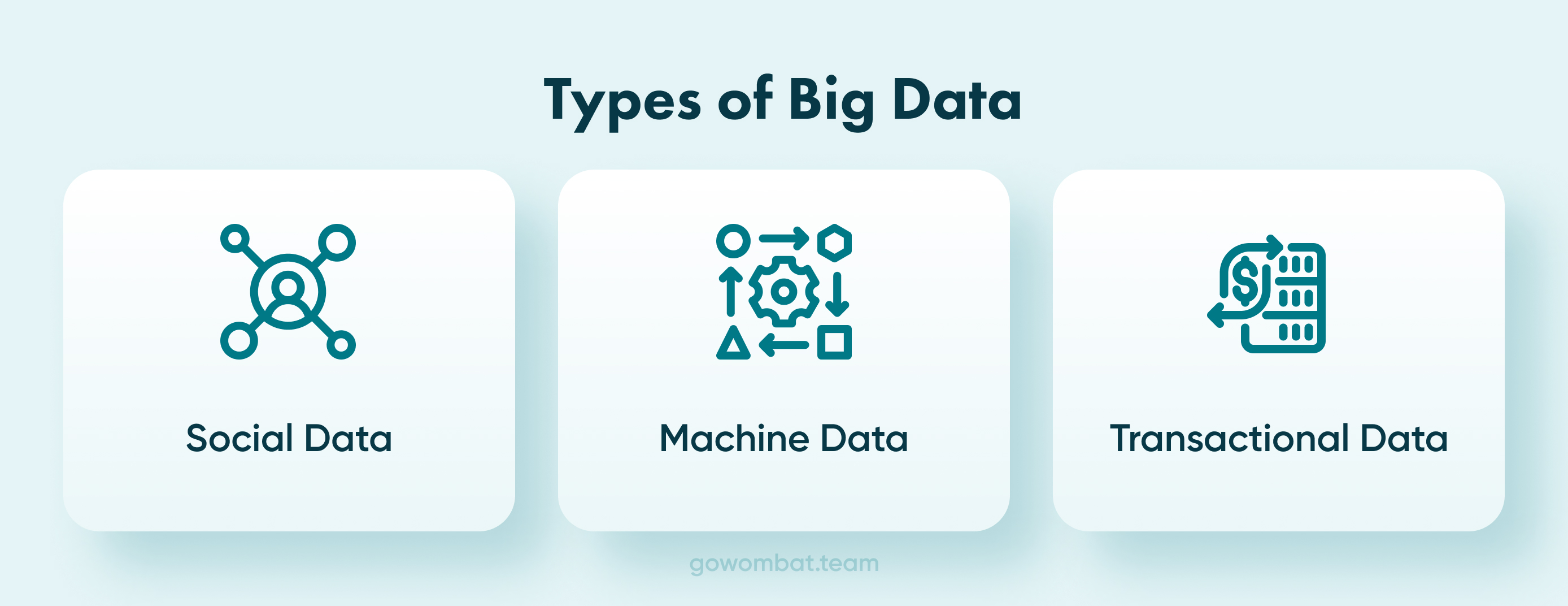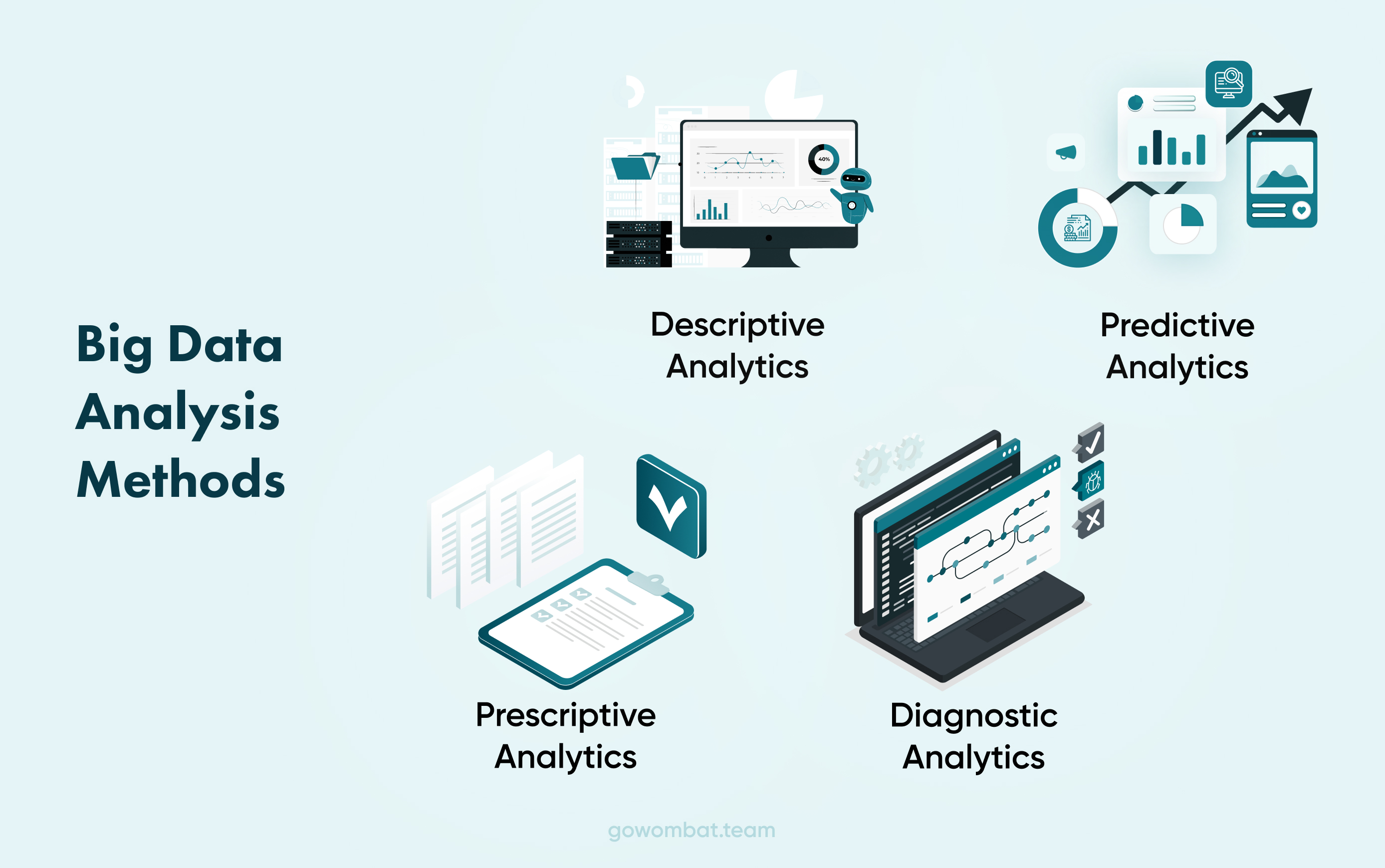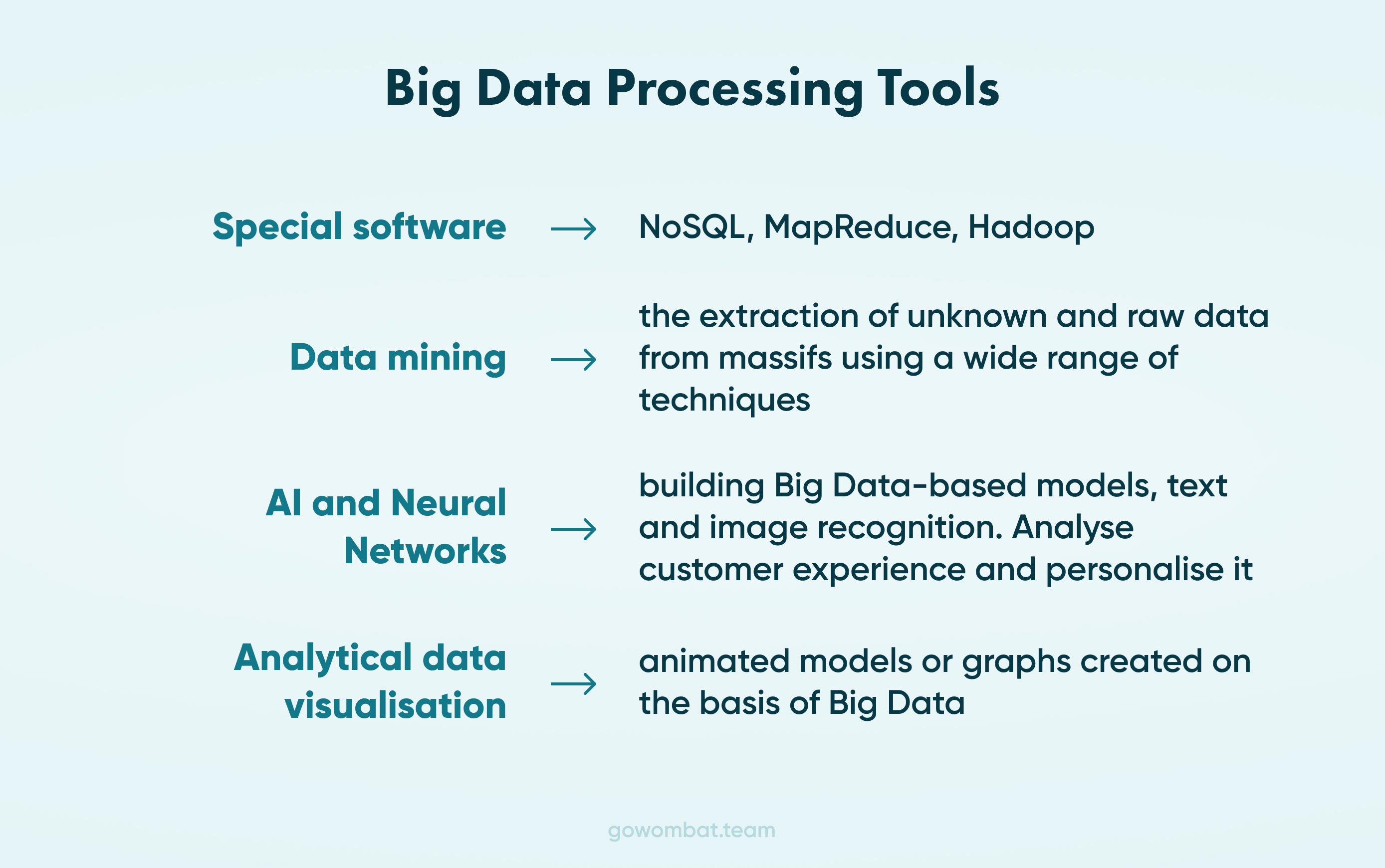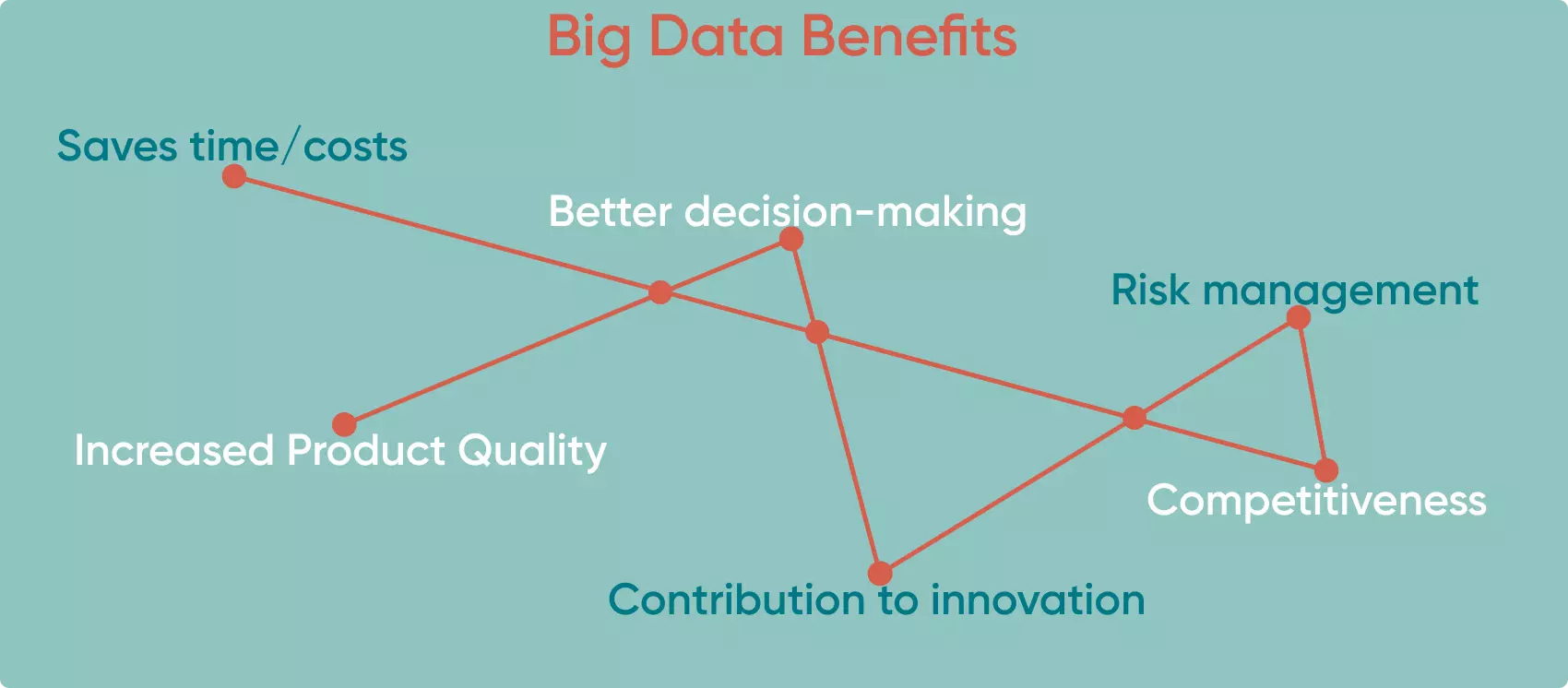Big Data in the Software Development Process


The Benefits and Tips from inside the Software development Process
Data is all around. In fact, it is so pervasive, that it is difficult to identify exactly how it influences us in today's society. For years, companies have collected data on existing and potential customers to provide an edge on what they think and what they might do next. Nowadays, we collect data on such a scale; we refer to it as Big Data. In fact, statistics relating to the big data collected, around 2.5 quintillion bytes of data are created per day, and cloud computing generates almost $400 billion in revenue. So, there's a big interest and big money in big data!
This article will provide a detailed insight into Big Data in software development, and how big data analytics in today's environment can help improve the performance of a business.
What Is Big Data?
The term Big Data means data massifs of large volume and significant diversification, analysed with specific computer technologies. For Big Data, the various sources include the Internet of Things (IoT), social media, blogs, mass media, sensor measurements, statistics, archives, and databases. We store big data in cloud storage, the so-called data lake.
Big Data and analytics are possible with structured and unstructured data and is used in many industries, including security, healthcare (diagnosis and prevention), retail, eCommerce, marketing, etc. In marketing and business, Big Data helps predict customer behaviour, optimise expenses and manufacturing processes, assess solvency, increase employees' productivity, etc.
A software development company is one that integrates Big Data algorithms into your software. Go Wombat incorporates Big Data systems and big data applications, and our specialists know how to make your software Big Data-friendly.
How Big Data Works: Its Types

We mentioned above that there are different sources of Big Data. In fact, to simplify our comprehension of such large amounts of data, we divide sources of Big Data into three types: social, machine, and transactional.
Social Big Data
This relates to everything an individual does on the Internet. For example, online shopping, or uploading thousands of photos to Instagram every second, and we send over 3 million emails. Can you imagine the amount of data that is generated every day? Other examples such as the internet of behaviour (IoB) and social data are statistics of cities and countries, information about people’s movements, and medical records — this list is far from complete.
Machine Big Data
Contrary to how it sounds, it does not relate this to machine learning but means that machines, sensors, and IoT also generate Big Data. For example, smartphones, smart home systems, security cameras, weather satellites, and other devices collect a lot of data and specialists can receive and process it. This all relies on big data applications for the processing and communication between devices and sources.
Transactional data
This mostly relates to the financial sector — funds transactions, purchases, operations with ATMs, etc. Modern computing systems provide instant access to Big Data massifs. We use special data centres with powerful servers for the storage of these massifs.
As noted before, besides physical servers, cloud storage, aka data lake, is also used, along with a Hadoop distributed file system comprising utilities for developing and implementing distributed computing programs.
Go Wombat to create your Big Data software — contact us!
How we Analyse Big Data

Big Data massifs are so huge that an Excel spreadsheet cannot handle them. So that is why you need appropriate software. Because of high-performance technologies like grid computing or in-memory analytics, companies can utilise any volume of Big Data for analysis. Increasingly, Big Data is used for tasks within advanced analytics, including artificial intelligence.
There are four primary Big Data methods for analysis.
Descriptive Analytics
The most widespread one. It answers the “What’s happened” question and analyses real-time data. We use basic mathematical functions for descriptive analytics. A good example is sociological research or web statistics data your company receives through Google Analytics.
Predictive Analytics
Predictive analytics help predict the probable course of action based on data. To do this, ready-made templates are used based on any objects or facts with similar characteristics. Using predictive analytics, it is possible to predict a crash or changes in price on a stock exchange, for example. Or to assess the potential borrower’s abilities to repay the loan.
Prescriptive Analytics
Using Big Data and modern technologies, it is possible to identify problem areas in business or any other activity and understand how you can avoid them in the future. Eventually, it will help you save a lot of money.
Diagnostic Analytics
Diagnostic analytics uses data to analyse the reasons for the incident. It helps identify anomalies and random connections between events and actions. For example, Amazon analyses sales and gross profit data to understand why the revenue is lower than expected.
How Is Big Data Used In Software Development?

When it comes to the creation of a software project with Big Data, you should realise that you can do everything from consumer preferences analysis to understanding how users deal with your software. So you have an excellent opportunity to provide users with what they really need.
This helps you to know three essential things:
Expectations Of Users
Using Big Data, you may finally find out what your potential target audience is expecting and looking for and what application they need. Or what functionality they need in existing software and what you can improve. Then you might identify the real business value of your software.
How Software Is Used
The next opportunity to make use of Big Data analysis is to understand how existing features in your software are used and whether users understand what these features are intended for, and what difficulties they might have. Statistical analysis may also show the features users don’t like or rarely use. Big Data helps you improve the user experience.
The Faster Go-To-Market Process
Of course, accurate data management enables bringing your product to market faster since it will contain the necessary information and functionality for your target audience.
How to make use of Big Data algorithms to benefit your business? Contact Go Wombat to build your software wisely!
Big Data in Agile Development Process
Today, agile software development is one of the most popular methods. Agile development incorporates an iterative approach to the development process and is divided into sprints. In this way, Big Data provides accuracy and efficiency for the development team to keep up with agile development.
Cloud-based analytics, Hadoop and other Big Data technologies improve software engineering at each stage and help the development team identify what product they will have.
Big Data changes the approach, and developers can test and analyse data while working on a specific sprint and understand what they have (or haven’t) done correctly. It saves time and minimises risks since the development team will better follow the set deadlines.
Advantages Of Big Data: Why Your Software Should Apply It

We think it is necessary to cover all the benefits of Big Data for your business in detail.
Saves time/costs
Big Data helps you identify problematic areas we mentioned earlier, identify their reasons, and optimise your business processes to multiply revenue and make it more attractive for current and potential customers.
Risk management
With the help of predictive analytics, you can know in advance what upcoming risks your business might face. Furthermore, you will be able to know what problems competitors face and avoid their mistakes.
Better decision-making
Traditional analysis methods cannot compete with Big Data analytics software that takes the decision-making process to a new level. As a result,
Increased product quality
Customer data analysis and understanding their preferences and needs help you create the right products they want to use and recommend.
Contribution to innovation
Research and development using Big Data analytics will help your business incorporate innovations customers are expecting.
Stay Competitive
Finally, you will be able to know what trends will rule in your industry in the near future and use them to get ahead of competitors. Also, you will have more insights into customers’ buying preferences to know how they do it.
Unlock Success with Premium Software Development
Contact us


Pitfalls To Consider: What Challenges Remain
However, there are always two sides to any coin, and we want you to know all the cons of handling Big Data and what challenges you may face.
Lack Of Specialists
One of the biggest challenges in Big Data software development is the lack of data analysts and data scientists. Software engineers cannot be skilled in everything. They may be good at mobile or web development, but when manipulating Big Data, AI, and machine learning require additional skills. So it can be very challenging to hire software teams who have data specialists on staff.
However, this is not a problem for Go Wombat. Our company has two dedicated data scientists who are qualified and experienced in working with data massifs.
Security
Customer data collection for analytics assumes that this data is sensitive and may contain personal information. Unfortunately, improper security leads to data breaches and theft of confidential data. In addition, massive data sets become a tidbit for hackers, and no one wants to put their business in danger. Therefore, you need to think about proper security.
At Go Wombat, we have a certified Chief Information Security Officer (CISO) in charge of making developed software secure and protecting it with appropriate security measures.
Compliance
This issue is closely related to the previous one. Confidential data processed by your software should be protected first, and it should comply with local government regulations. When Big Data stores or processes sensitive information, you should ensure that you follow all government regulations concerning storing, handling, processing and maintaining this information.
GDPR is an excellent example of such regulations if you do business in the European Union. Our CISO is also a certified Data Protection Officer, so he will perform all necessary activities to ensure the compliance of your software with GDPR.
Why Working With Go Wombat is helpful with Big Data
Go Wombat provides software development and consulting services, so we are always glad to help you choose the right solution for your business and specific case. Our specialists can explore your data, find suitable methods to benefit your business, and follow all security and compliance measures.
You should entrust big Data software development to a competent development company. Look for a company that can show expertise and experience. Look at previous projects to understand the breadth of knowledge.
Contact Go Wombat for a chat about your project.
How can we help you ?







